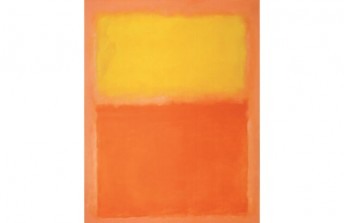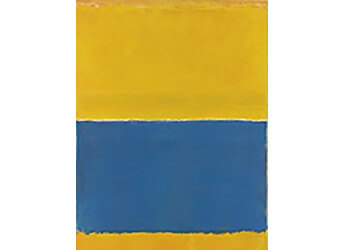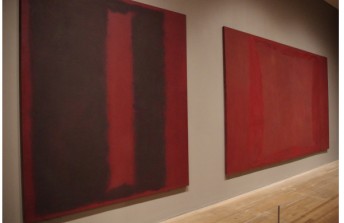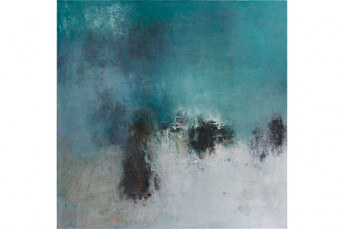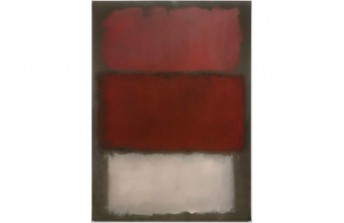Mark Rothko: The Master of Color in Search of The Human Drama
Dec 2, 2023
A key protagonist of Abstract Expressionism and color field painting, Mark Rothko (1903 – 1970) was one of the most influential 20th-century painters whose works deeply spoke, and still do, to the human condition. Renowned as a master of color, Rothko’s paintings were far from mere explorations of pure painterly elements. Despite numerous interpretations based on the formal qualities of his work, the artist embarked upon a journey to captivate the viewer, investigate emotion, and instigate an experience within a canvas through rich pigment, color fields, and the relationships the hues establish, evoking a deeply human connection with the artwork that often escapes reason and hinders explanation.
Predominantly an autodidact and a misfit in a sense, Mark Rothko was a man and an artist of a complex mind, opposing labels, confronting the epithet of a “colorist” in particular, and a painter in a constant search to portray the precariousness of the human drama. Throughout his career, the painter never adopted a group mentality, creating a unique body of work that followed its own trajectory, informed by the tragedy of the human condition. From his early figurative works and the revolutionary multiforms to the iconic Rothko Chapel and the Black and Grey series, Rothko’s work is often interpreted through an evolutionary logic, manifesting a trajectory that mirrors his life.
Tracing the artist’s oeuvre, the ongoing groundbreaking exhibition Mark Rothko at the Fondation Louis Vuitton in Paris chronologically reexamines the role of color, demonstrating that its purge was a deception. Imbued with plum and burgundy tones, the painter’s dark canvases disenchant the delusion, as also shown by a series of works from the late 1960s. “I’m not interested in color. It’s light I’m after,” Rothko once remarked, weaving a mutual thread between all his paintings, revealing the true function of the hues.
From Rotkovich to Rothko
Synonymous with color field painting and among the pioneers of abstract art, Mark Rothko was born on September 25, 1903, in a family of liberal Jews as Marcus Yakovlevich Rotkovich, adopting the world-famous Anglicized name much later. At a young age, the artist was forced to flee his native Dvinsk (modern-day Daugavpils, Latvia) and emigrated with his family from the Russian Empire to the United States in 1913. Although he attended a religiously based school in his home country before completing Lincoln High School in Portland, Oregon, Rothko was never particularly religious, nor did faith inform much of his work.
In the early 1920s, the painter enrolled at Yale on a scholarship, which ended after the first year, propelling him to quit his studies and move to New York in 1923, where he joined the Art Students League and started taking classes taught by Cubist artist Max Weber. At the time, New York was one of the safe havens for European artists and a flourishing creative hub, bringing together German Expressionists, French modernists, and Surrealists, whose work greatly influenced the young Rothko, who was particularly impressed by Paul Klee and Georges Rouault.
In the 1930s, the painter met fellow artists such as Adolph Gottlieb, Barnett Newman, and John Graham, bringing him closer to the painter Milton Avery, who proved pivotal in Rothko’s choice to pursue an artistic career. Although at first under Avery’s influence, Rothko slowly began distancing himself from the style of others, which became evident at his first East Coast solo exhibition at the Contemporary Arts Gallery in New York in 1933. Just two years later, the painter formed The Ten, an independent group of artists that included Ben-Zion, Ilya Bolotowsky, Adolph Gottlieb, Louis Harris, Yankel Kufeld, Louis Schanker, Joseph Solman, and Nahum Tschacbasov, transforming from Marcus Rotkovich into Mark Rothko.
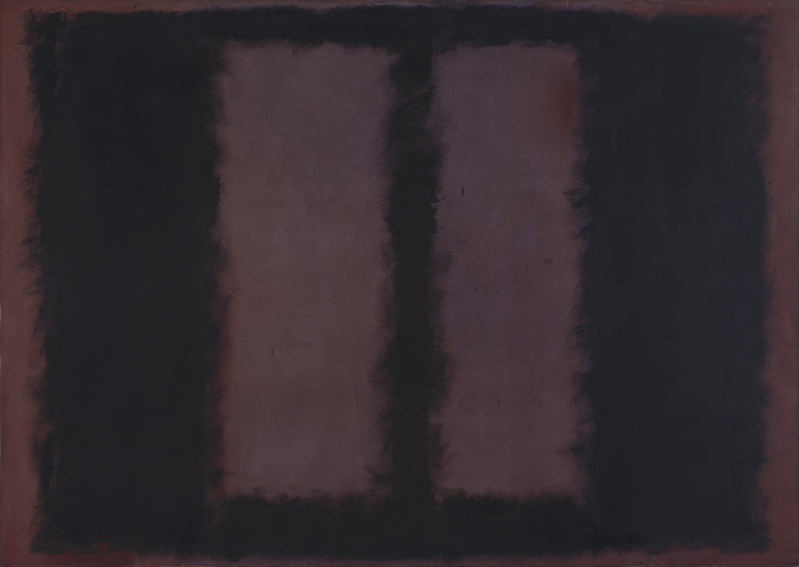
Mark Rothko - Black On Maroon, 1958. Oil on canvas. 266.7 x 365.7 cm. Tate, Londres. Presented by the artist through American. Foundation of Arts, 1969. © 1998 Kate Rothko Prizel & Christopher Rothko - Adagp, Paris, 2023
Myths and Multiforms
Regardless of era or stylistic elements, Mark Rothko seems to have gradually been liberating an interest in depicting the tragedy of human existence epitomized by color. His first New York solo show featured mostly portraits and urban scenes, heralding a painterly logic led by fields and hues of color. The artist’s transitional period (1940-1950) still leaned on figuration, but during this time, Rothko began incorporating mythological references and surrealistic elements, influenced both by fellow artists and the pioneers of modern psychology, Sigmund Freud and Carl Jung. Rothko’s paintings, such as The Omen of the Eagle (1942), were part of the intent to create a “contemporary myth,” functioning as a precursor for Abstract Expressionism.
Cleansed of any figurative elements or references, Rothko began painting his famous Multiforms in 1946. The composition of the abstract works was entirely reduced to superimposed rectangular fields of color, exploring the emotional, psychological, and visual sensations that the seeping of different hues and tones could induce. “A painting is not a picture of an experience. It is an Experience,“ Rothko summed up, elucidating the importance of scale and the abandonment of the frame as critical as the hues, tones, and vibrancy of color in his mission to construct a multi-sensory experience rather than just a painting.
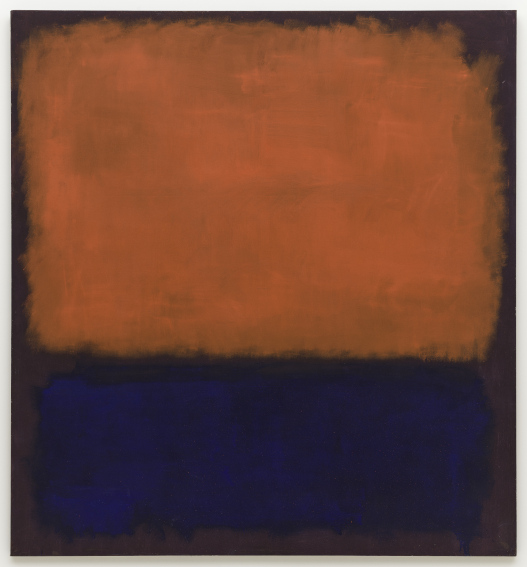
Mark Rothko - No. 14, 1960. Oil on canvas. 290.83 cm x 268.29 cm. San Francisco Museum of Modern Art - Helen Crocker Russell Fund purchase. © 1998 Kate Rothko Prizel & Christopher Rothko - Adagp, Paris, 2023
An Immersive, Intimate Experience
Rothko’s intent to immerse the viewer in his works was realized in several commissions and projects, including the famous Seagram Murals (1956-1958), created in harmony with the architecture. Although conceived for Mies van Der Rohe’s Seagram Building, the nine canvases found their home at the Tate, comprising the spectacular Rothko Room. In the Seagram Murals, Rothko’s palette darkened; the brown, burgundy, maroon, and red color fields seeped into one another, and his composition shifted to horizontal and vertical slates insinuating architectural forms, doors and windows bleeding into the background. Rothko’s first convergence with architecture was a commission for the Philips Collection in Washington D.C., followed by the Harvard Murals, and climaxing with the Rothko Chapel in Houston, Texas. Before his suicide in 1970, Mark Rothko was working on the Black and Grey series, suggesting a link with Minimalism according to some of the recent interpretations.
During a critical gap in his painting practice, Rothko devoted himself to writing a book to elucidate his painting vision. Published posthumously in 2004, The Artist’s Reality offers a precious glimpse into the mind and soul of one of the most prominent 20th-century artists whose paintings continue to enchant through its mysteries. Although reading Rothko provides the key to unlocking the secrets of his paintings, it can never replace the intimate, emotional, and inexplicable sensational reflex when we encounter one if we dare follow Rothko’s invitation: “To us, art is an adventure into an unknown world, which can be explored only by those willing to take the risks.”
Featured image: Mark Rothko, Light Cloud, Dark Cloud, 1957. © 1998 Kate Rothko Prizel & Christopher Rothko - Adagp, Paris, 2023
Article by Danica Đorđević

